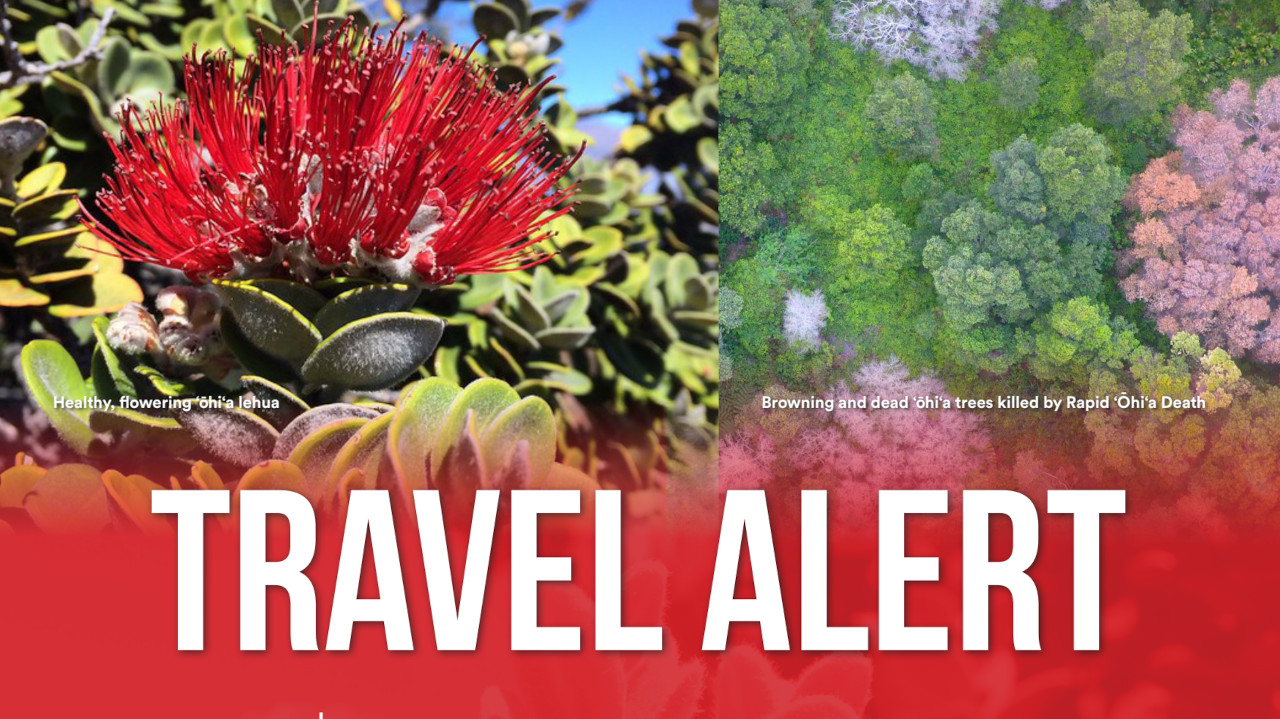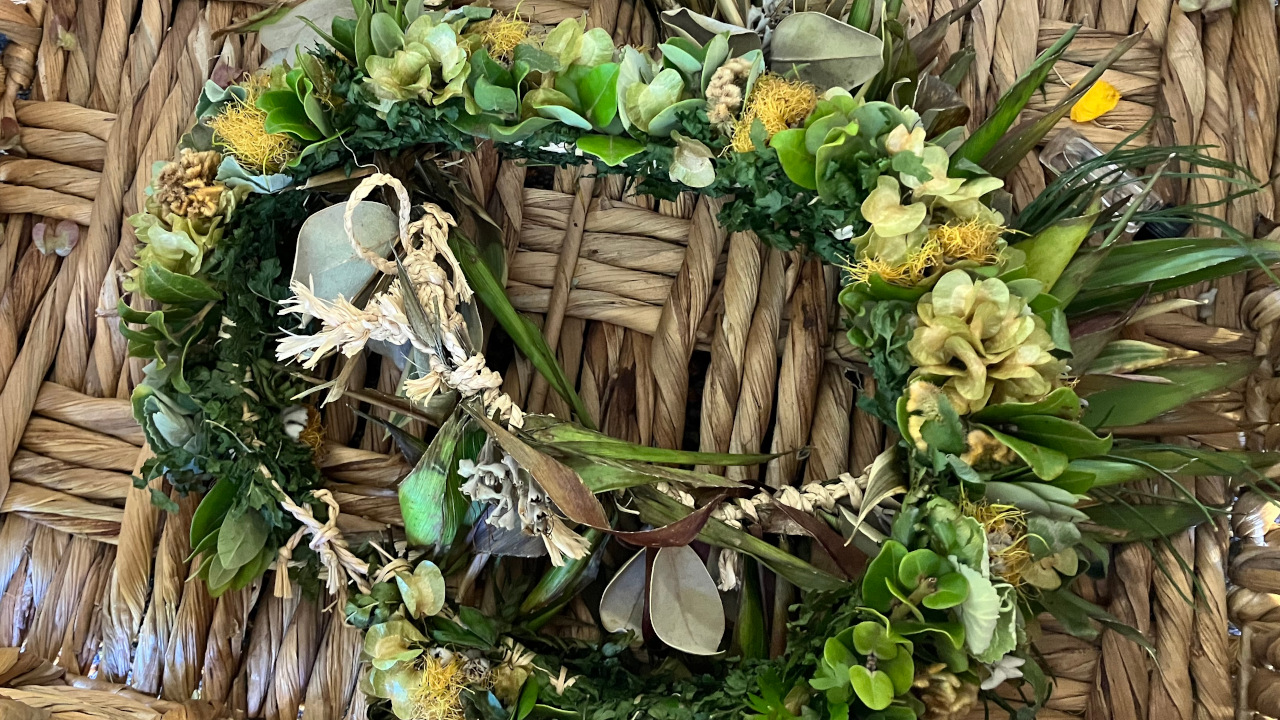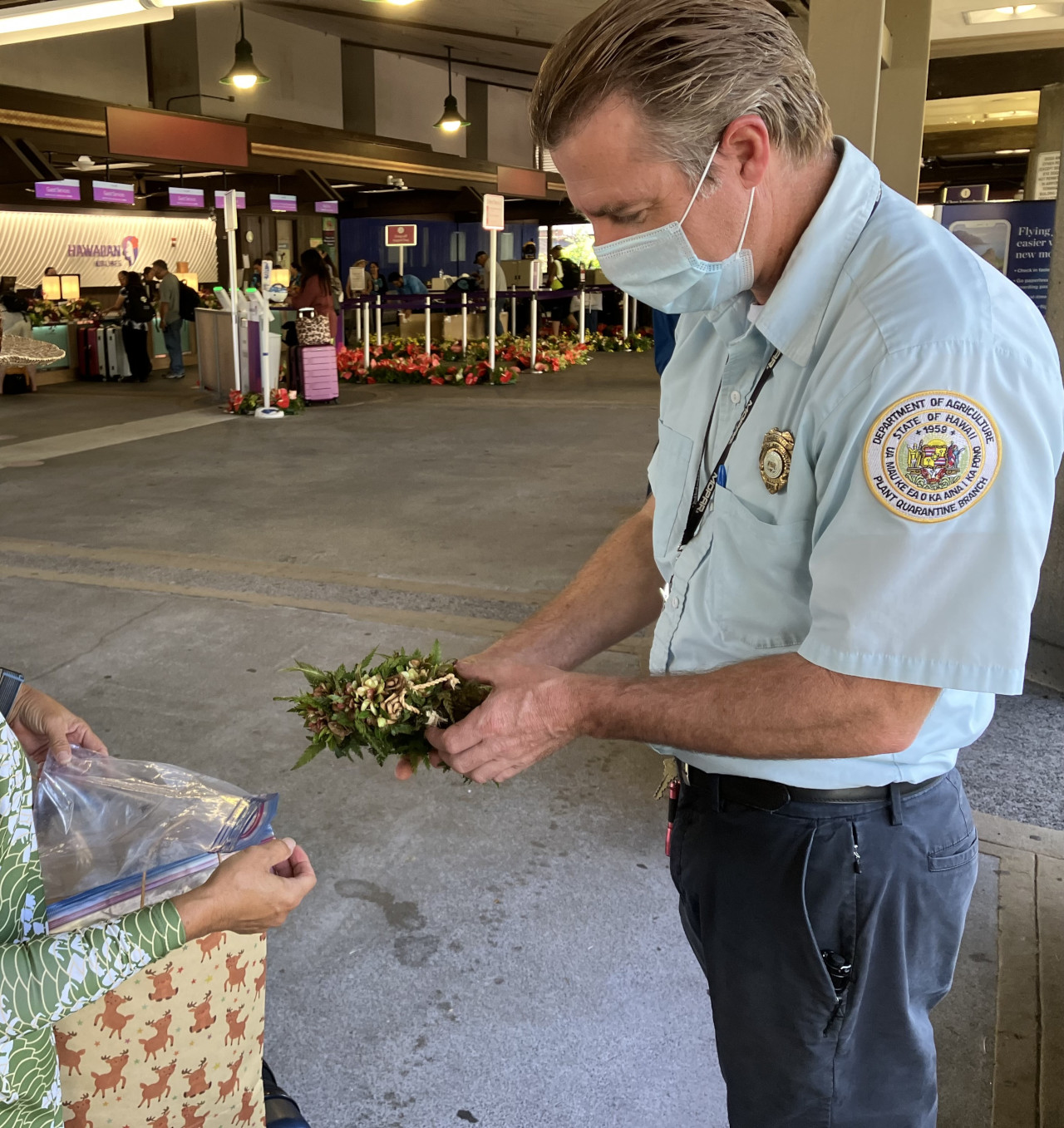(BIVN) – As the Merrie Monarch Festival gets underway in Hilo, Hawaiʻi officials are reminding travelers of the restrictions on moving ʻōhiʻa on Hawaiʻi island.
The Hawai‘i Department of Agriculture (HDOA) has posted a travel alert, and says the quarantine restrictions remain in place due to the fungal plant disease, rapid ʻōhiʻa death (ROD), which is devastating to native forests.
From the HDOA news release:
The quarantine has been in place since 2015 and restricts the movement of ʻōhiʻa plants and plant parts, including flowers, leaves, seeds, stems, twigs, cuttings, untreated wood, logs, mulch, green waste and frass (sawdust from boring insects) and any soil from Hawai`i Island. Even if the ʻōhiʻa originated from another island, it may not be transported off of the island. Transport of such items is only allowed with a permit issued by the HDOA Plant Quarantine Branch (PQB).
PQB inspectors will be stationed at airports in Hilo and Kona on Sunday and Monday, April 27 and 28, to collect any ʻōhiʻa material, which will be respectfully returned to the native forests on Hawai‘i Island. During last year’s Merrie Monarch travel period, Hilo PQB inspectors intercepted 27 lei poʻo (head lei).
At the event, the University of Hawai‘i at Mānoa, College of Tropical Agriculture and Human Resilience will provide hoʻihoʻi baskets to collect any ʻōhiʻa. Baskets will also be stationed at the Hilo and Kona airport PQB offices.
The Hawaiʻi Board of Agriculture issued an emergency quarantine in August 2015 to stop the spread of the plant fungus from Hawaiʻi Island to other islands. A permanent quarantine rule was established in 2016. Any person who violates the quarantine rule may be charged with a misdemeanor and fined not less than $100 with a maximum fine of $10,000. For a second offense committed within five years of a prior conviction under this rule, the person or organization shall be fined not less than $500 and not more than $25,000.
The Merrie Monarch Festival draws dozens of hula hālau and hundreds of spectators to Hawai‘i Island. It is important to note that the very act of harvesting ʻōhiʻa may spread the disease, as spores may be carried in soil and by harvesting tools, vehicles, shoes and clothing to uninfected areas.
ROD was first noticed in 2010 in Puna. In 2014, the fungus was initially identified as Ceratocystis fimbriata by researchers at the U.S. Department of Agriculture Daniel K. Inouye Agricultural Research Service. Recent research has reclassified Ceratocystis fimbriata into two distinct species that are new to science, Ceratocystis lukuohia and Ceratocystis huliohia. It is estimated that at least one million ʻōhiʻa trees have been killed by ROD just on Hawai‘i Island alone.
The disease was detected on Kauaʻi in 2018 and on O‘ahu in 2019. Also in 2019, one ʻōhiʻa tree on Maui was infected and destroyed and ROD has not been detected on the island since. It is not known how or where the disease entered the state.
The Merrie Monarch Festival takes place in Hilo from April 20 to 26.




by Big Island Video News9:54 am
on at
STORY SUMMARY
HILO, Hawaiʻi - Quarantine restrictions remain in place on the transport of ʻōhiʻa from Hawaiʻi island due to the fungal plant disease, rapid ʻōhiʻa death.